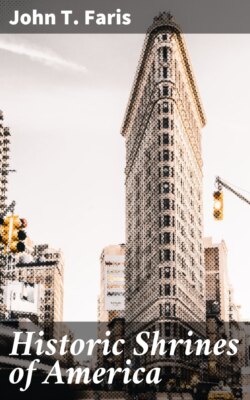Читать книгу Historic Shrines of America - John T. Faris - Страница 3
На сайте Литреса книга снята с продажи.
FOREWORD
ОглавлениеTable of Contents
Circular tours have long been popular in England. There was a time—as there will be a time again—when American visitors felt that to make the rounds of the cathedral towns or the historic castles or the homes and haunts of great men and women, was a necessary part of seeing the tight little island.
"What a pity it is that we in America have no such wealth of historic places," one returning tourist was heard to remark. "Oh, of course, there are a few spots like Independence Hall and Concord and Lexington," he went on, "but there are not enough of them to make it worth while to plan a tour such as those in which we have taken delight in England."
It was easy to point out to the traveler his mistake; most Americans know that the country is rich in places of historic interest. Just how rich it is they may not realize until they make a serious study of the landmarks of their own land, as does the European tourist of the centers noted in his guidebook.
In fact, there are in America so many houses, churches, and other buildings having a vital connection with our history that volumes would be required to tell of them all. Even a brief record of the buildings whose owners or occupants played a conspicuous part in the early history of the country would fill a large book.
It is fascinating to learn of these houses and public buildings and to delve into the biographies which tell what happened to the people who lived in them. Fiction seems tame after connecting, for instance, the story of Alexander Hamilton and Elizabeth Schuyler with the Ford Mansion and the Campfield House at Morristown, New Jersey, then with the Schuyler Mansion in Albany, New York, and The Grange in New York City. The heart of the patriot burns with new love for his country as he reads of Faneuil Hall and the Old South Church and Carpenters' Hall. The story of the Revolution is clothed with living interest when Washington and his generals are followed to Valley Forge and Newburgh and Cambridge and Morristown and Princeton. Fresh appreciation of the sacrifice of the pioneers comes from going with them into the garrison houses of New England, along the Wilderness Road in Kentucky, to the settlements on the Ohio, or to the banks of the Wabash where more than one Indian treaty was made.
Next comes the keen pleasure of visiting the houses and churches which, through the piecing together of these facts, have become like familiar friends. The vacation journey that includes a careful study of a few of these buildings becomes a fascinating course in patriotism.
It is the purpose of the author of "Historic Shrines of America" to tell just enough about each of one hundred and twenty of these buildings of historic interest to create a hunger for more; to present pictures sufficiently attractive to make those who turn the pages of the book determine to visit the places described; to arrange the brief chapters in such sequence that it will be possible for the reader to plan for successive vacations a series of journeys through the centers where historic buildings may be found, and, in doing this, to pass by so many structures of interest that the reader and the tourist will have abundant opportunity to discover houses and churches of which he will say, "I wonder why this was not included."
